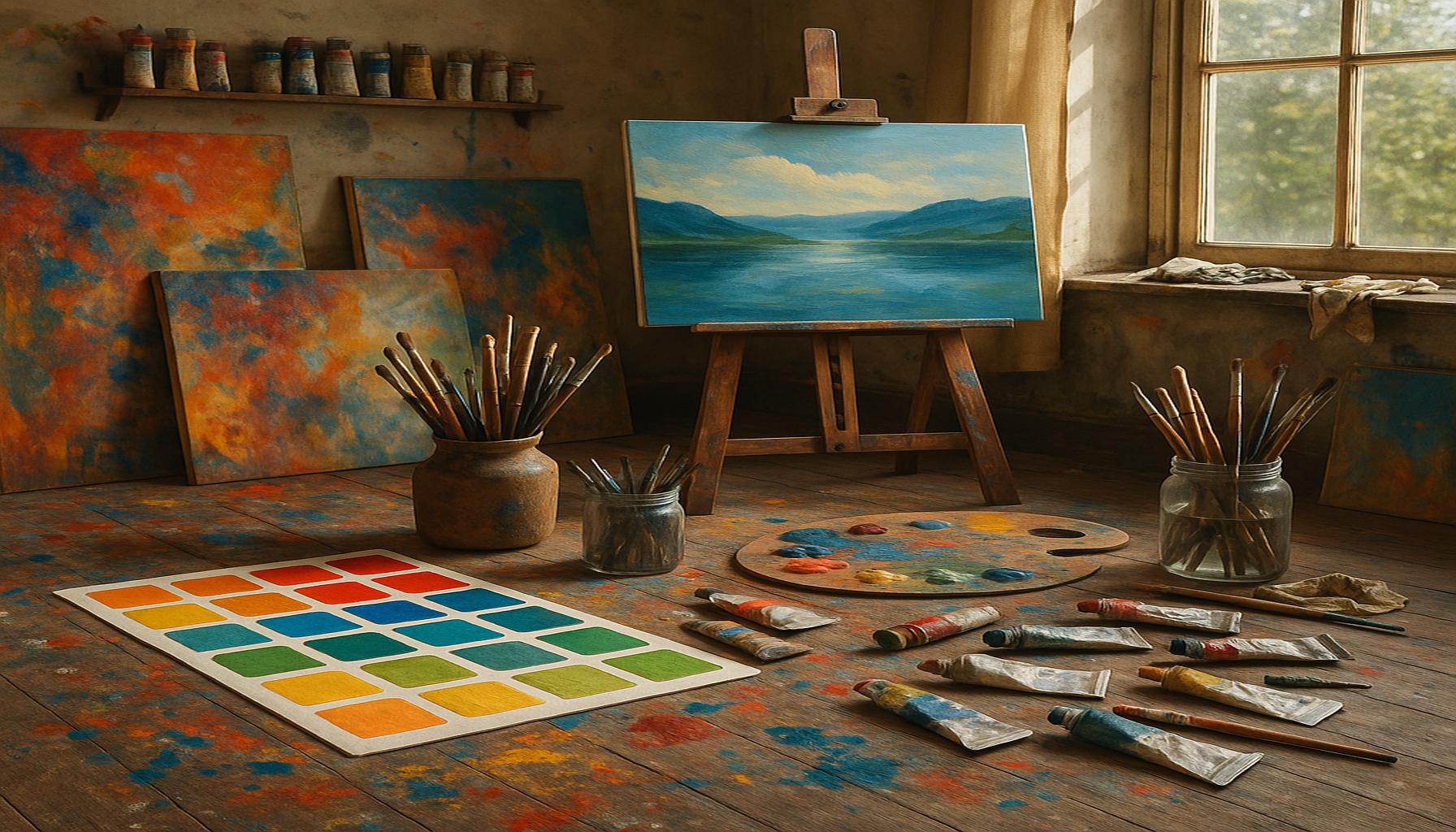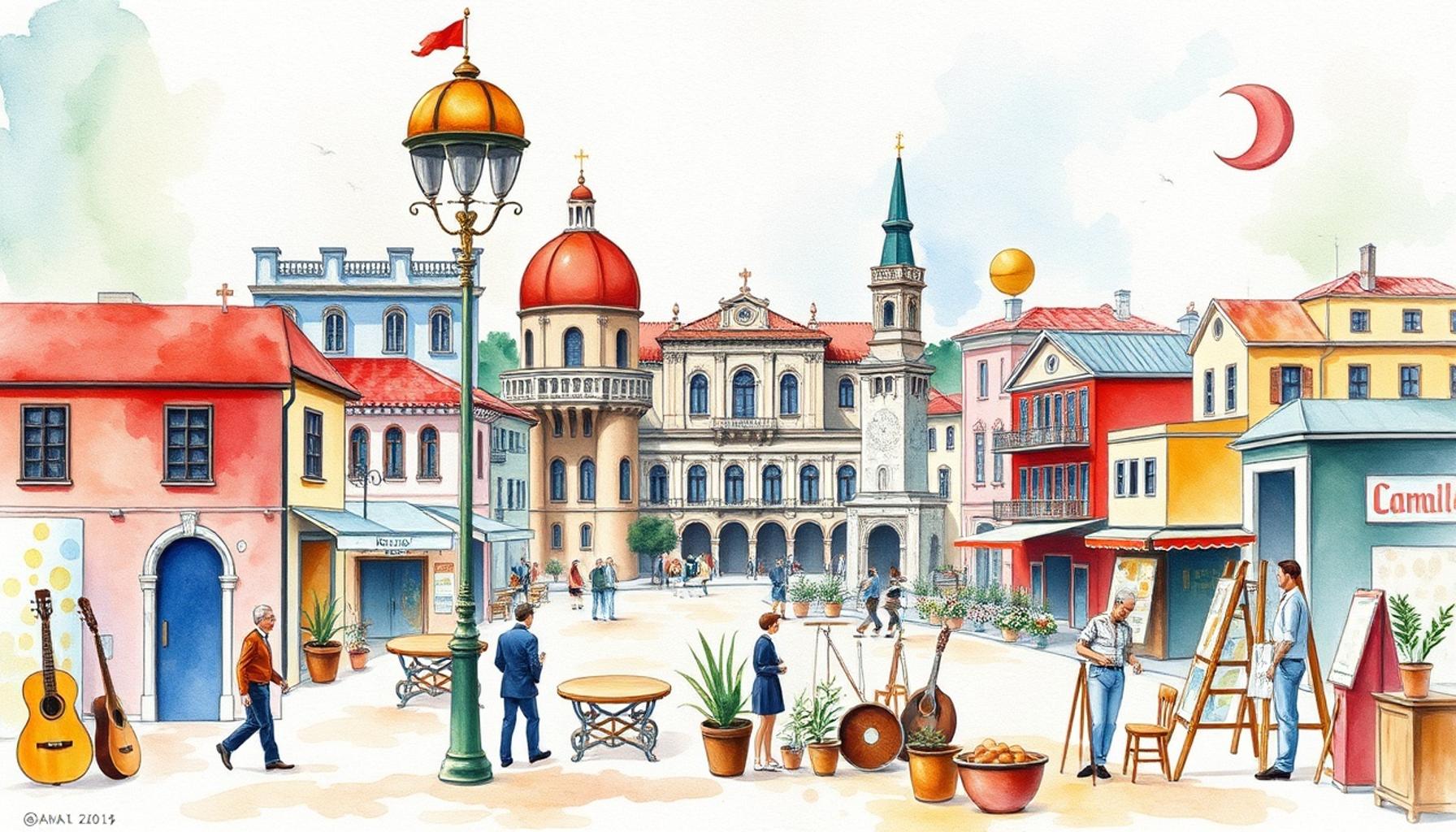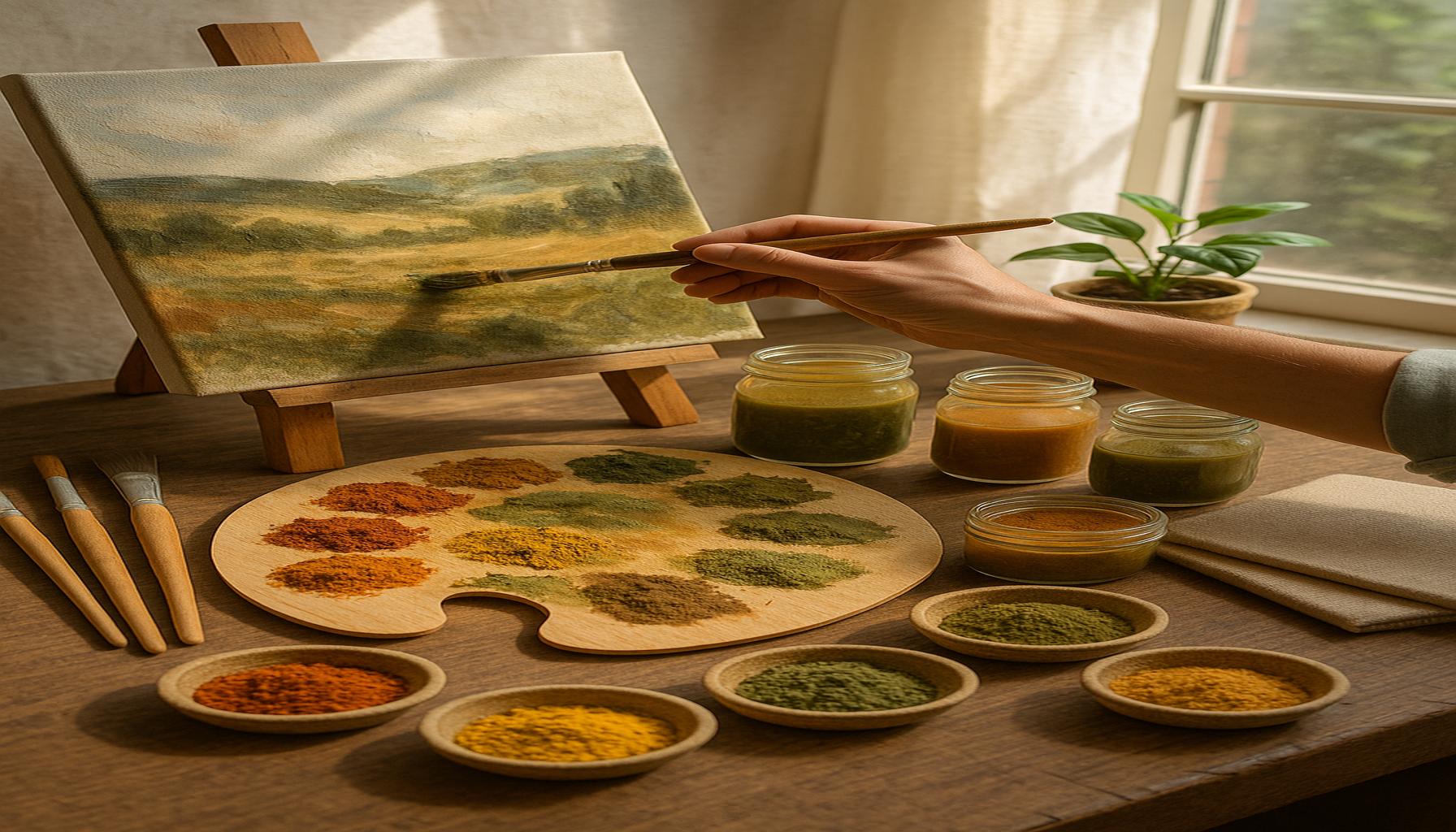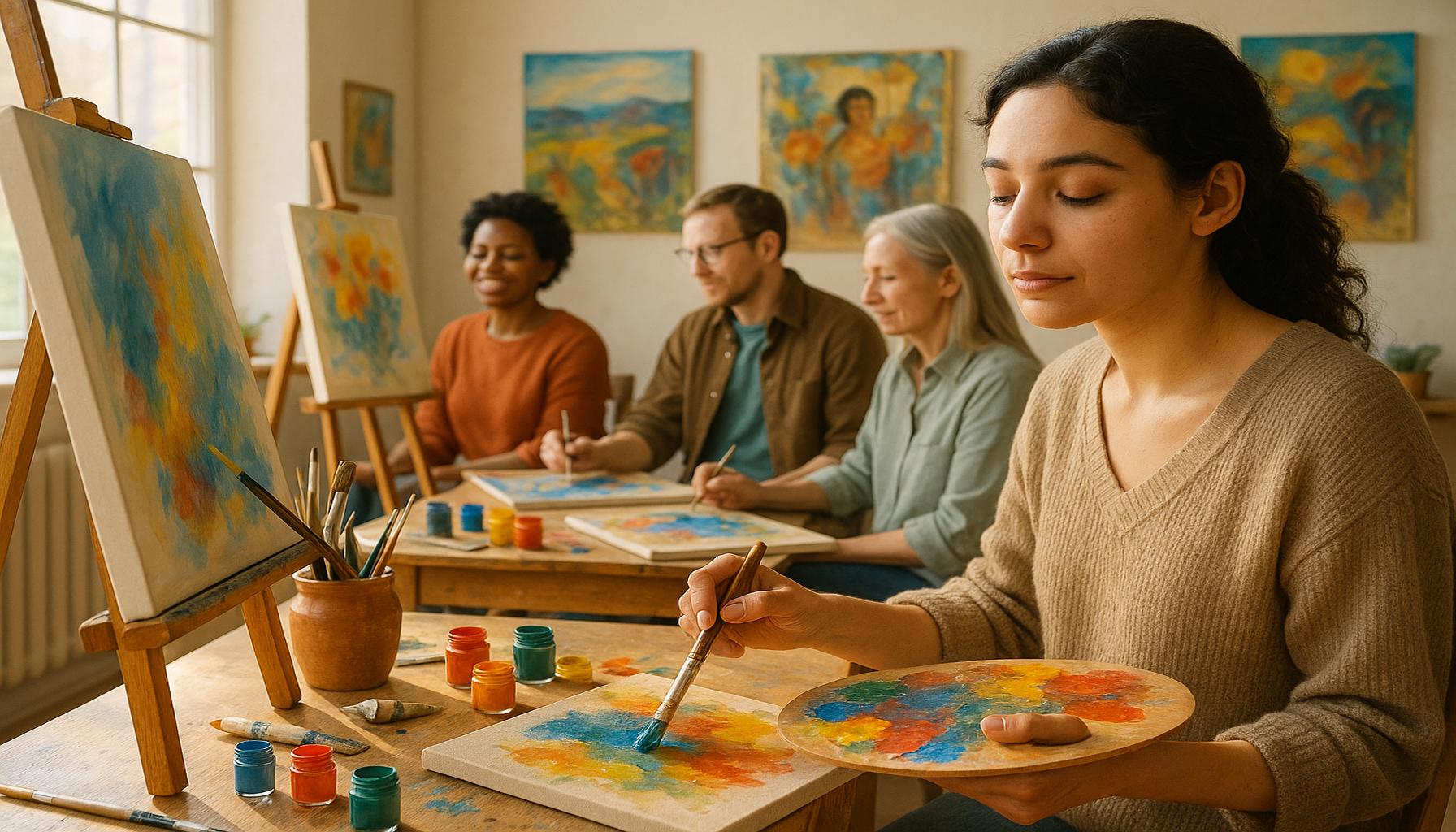The Role of Color Psychology in Painting: How Colors Influence Mood and Emotion

Understanding the Power of Color in Art
Have you ever walked into a room and immediately felt a certain way? The reason could be the colors surrounding you. Color psychology plays a pivotal role in how we interpret our environments, especially in the realm of painting. From the calming blues of a serene sea to the vibrant reds of a bustling city, colors have the ability to stimulate emotions, influence moods, and evoke memories.
Different colors can evoke distinct emotions, leading artists to be deliberate in their color choices. Here are some commonly recognized influences:
- Red: Often associated with excitement, passion, and energy, red can physically increase heart rates and even stimulate appetite. Artists like Wassily Kandinsky used red to infuse their work with urgency and vitality.
- Blue: Evoking feelings of calmness, serenity, and trust, blue has been a frequent choice in artworks meant to convey a sense of peace, like Yves Klein’s iconic blue canvases which invite viewers into a meditative state.
- Yellow: Representing happiness, warmth, and optimism, yellow can light up a space as seen in Vincent van Gogh’s sunflowers, which embody the joy and brightness of life. This color can easily galvanize cheerfulness in viewers.
- Green: Often associated with nature, growth, and balance, green is abundant in landscapes and nature-themed works. Its use in artwork can symbolize renewal and tranquility, as evident in Claude Monet’s lush gardens.
- Purple: Historically linked to royalty and spirituality, purple promotes creativity and luxury. Artists like Mark Rothko have harnessed the power of purple to invite viewers into a deeper emotional exploration.
As artists experiment with these hues, they draw viewers into a narrative shaped by color. The emotional impact of a painting often hinges on the seamless integration of color theory and artistic intent. It is not uncommon for artists to employ contrasting colors to create tension or harmony, altering the viewer’s emotional response.
Why It Matters
Understanding how colors influence mood and emotion can deepen our appreciation of art. By recognizing that colors can invoke certain feelings, we become better equipped to analyze and interpret the narratives behind artworks. This understanding opens doors to new interpretations and enhances our viewing experiences, allowing us to engage with art on a more profound level.
Color psychology is rich with cultural connotations. In different contexts, the meanings of colors can shift. For example, in Western societies, white is often associated with purity and new beginnings, whereas in some Eastern cultures, it symbolizes mourning. This diversity in interpretation emphasizes the importance of contextualizing art within its cultural backdrop.
Join us as we explore the intricate relationship between color and emotion in art. Discover how it shapes our perceptions and connects us to the creative visions of artists, revealing the unseen layers of meaning that color imbues in the world of visual art.
DIVE DEEPER: Click here to discover creative and eco-friendly projects with yarn scraps
The Emotional Spectrum of Color in Painting
When exploring the realm of color psychology in painting, it becomes clear that colors extend beyond aesthetic appeal; they play a crucial role in communicating emotions and inviting viewers into an artistic dialogue. Artists often harness colors not just to express their personal experiences, but to resonate with the emotional states of their audience, creating a shared understanding that transcends verbal language.
Colors can elicit strong emotional responses, which is why artists carefully select their palettes to convey specific sentiments or themes. A deeper look into how various colors impact mood reveals an extensive emotional spectrum:
- Orange: A blend of red’s fiery energy and yellow’s cheerfulness, orange radiates enthusiasm, creativity, and warmth. It is frequently seen in modern art, capturing the vibrancy of life, as exemplified in the works of artist Henri Matisse.
- Pink: Often linked with tenderness, love, and calmness, pink can soften a painting, making it feel more inviting. Artists like Georgia O’Keeffe have used pink hues to evoke feelings of gentleness and intimacy in their floral depictions.
- Brown: The color of the earth, brown symbolizes stability, reliability, and comfort. It can be found in various landscapes, grounding the viewer in nature, which can be seen in the works of artists like Andrew Wyeth.
- Black: While sometimes associated with negativity, black can create depth and sophistication in art. It can evoke a wide range of emotions, from seriousness and elegance to despair, depending on its context in a painting. Artists like Franz Kline play with black to forge striking contrasts in their abstract works.
- White: Symbolizing purity and simplicity, white can bring a sense of peace and clarity to a painting. It is often used by modern artists to emphasize other colors, creating a clean canvas that invites contemplation, as seen in the art of Donald Judd.
The emotional resonance of these colors illustrates why color psychology is integral in art. Artists leverage this knowledge to craft narratives that engage viewers not just visually, but emotionally as well. This interaction can lead to a visceral experience, where the viewer’s emotions are stirred, challenged, or affirmed through the strategic use of color.
By recognizing the psychological implications of colors, observers elevate their engagement with paintings. For instance, understanding that a bold color could signify passion or assertiveness might create a different viewing experience compared to merely observing it for its aesthetic qualities. Viewers begin to unravel a deeper layer of meaning, allowing the art to speak to individual emotions and memories.
As we delve further into the complexities of color within the artistic landscape, we will uncover how artists strategically blend hues to create emotional depth, evoking varied feelings that resonate through time and space. The interplay between color and emotion not only enriches artistic expression but elevates the viewer’s experience, transforming mere observation into a profound emotional journey.
The Impact of Warm Colors on Emotion
Warm colors, such as red, orange, and yellow, are known for their vibrant energy and potentially overwhelming presence. These hues can evoke feelings of warmth, excitement, and even passion, but they can also lead to heightened emotions. For example, a painting that predominantly features red might stimulate energy and enthusiasm, igniting feelings of love or aggression, depending on the context. According to studies in color psychology, rooms painted in warmer tones often create a sense of comfort but can also increase anxiety if overused.
Cool Colors and their Calming Effect
On the other end of the spectrum, cool colors like blue, green, and purple tend to present a calming influence. These shades can promote tranquility, peace, and relaxation. A serene landscape painted in various shades of blue can transport viewers into a more relaxed state, provoking feelings of security and stability. Research indicates that environments rich in cool colors may enhance concentration and clarity of thought, making spaces feel more open and airy.
Color Contrast and Emotional Response
Interestingly, the contrast between warm and cool colors within a single piece can lead to a dynamic emotional experience. A painting that integrates both warm and cool colors can evoke complex feelings like tension combined with tranquility, sparking a dialogue between contrasting emotions. For instance, the juxtaposition of a fiery red sunset over a calm blue ocean can bring forth a sense of awe and wonder while also promoting reflection on internal conflicts. This use of color contrast not only captures attention but also deepens engagement through visual storytelling.
Cultural Context and Color Perception
Additionally, it’s essential to consider the cultural context in which colors are perceived. Different cultures attach varying meanings to colors; for instance, while white is often associated with purity in Western societies, it represents mourning in some Eastern cultures. As such, an artist’s choice of color can also communicate broader themes that connect to social narratives, history, and identity. Understanding the socio-cultural implications of colors can enrich our interpretation of artworks and their emotional resonance, leading viewers to explore the deeper meanings embedded in their visual experience.This exploration of color psychology in painting not only sheds light on how colors influence mood and emotion but also invites individuals to further investigate their personal relationships with color in art and life. As the interplay of hues continues to fascinate, the dialogue around color and emotion remains as vibrant and essential as ever.
DIVE DEEPER: Click here to uncover essential techniques and materials
The Complex Interplay of Color Relationships
Understanding color psychology in painting goes beyond recognizing individual colors; it also involves examining how colors interact with one another. The relationships between colors can create visual dynamics that enhance or diminish emotional impact. Artists exploit color combinations and harmonies to guide the viewer’s emotional journey through their work.
Complementary colors — hues that are opposite each other on the color wheel, such as blue and orange or red and green — generate a striking contrast that can evoke feelings of excitement or tension. This is evident in the works of Vincent van Gogh, who used complementary colors to enhance the emotional intensity of his paintings, such as in “The Starry Night,” where the vibrant yellows of the stars clash against deep blues to create a sense of drama.
On the other hand, analogous colors — shades that sit next to each other on the color wheel, like yellow, yellow-orange, and orange — promote harmony and tranquility. Artists like Claude Monet employed analogous palettes to instill serenity, as seen in his tranquil landscapes, where soft blends of colors mirror the calmness of nature.
Color temperature also plays a significant role in evoking emotions. Warm colors like reds, oranges, and yellows tend to create feelings of warmth, enthusiasm, and comfort, while cool colors such as blues, greens, and purples are often associated with calmness, sadness, or introspection. This thermal distinction can dictate the mood of a painting, as demonstrated by Edvard Munch’s iconic “The Scream.” The use of swirling reds and oranges enhances the painting’s sense of urgency and anxiety, compelling viewers to feel the tormented emotion emanating from the canvas.
The Influence of Cultural Context on Color Perception
Color psychology is not universal; it varies significantly across different cultures, influencing how colors are perceived and interpreted. For example, while white often signifies purity and peace in Western cultures, it may represent mourning and death in certain Eastern traditions. This cultural context can affect how paintings are received globally, with the emotions conveyed by color resonating differently depending on the viewer’s background.
Artists often draw from their cultural heritage to imbue their works with deeper meaning. The vibrant use of red in Mexican art, for instance, is frequently associated with celebration and life, as observed in the works of Diego Rivera. This tradition contrasts sharply with more subdued color choices in Scandinavian art, where the aesthetic often mirrors the stark landscapes, infusing a sense of solitude that resonates with the cultural ethos of the region.
Psychological interpretations of color also evolve with trends and shifts in societal mood. The rise of digital art forms and new media has created a playground for contemporary artists to experiment with color application, molding emotional responses in dynamic ways. For example, the hyper-saturated colors in street art often convey messages of rebellion and urgency, engaging audiences in dialogues about social or political matters, as seen in the works of artists like Banksy.
By delving into the undercurrents of color relationships and recognizing the influence of cultural contexts, one can appreciate the profound role color psychology plays in painting. It transforms the canvas from a simple visual medium into a complex emotional landscape, inviting viewers to explore their own feelings and experiences intertwined with the artists’ narratives.
DIVE DEEPER: Click here to discover creative ways to use yarn scraps
Conclusion: The Transformative Power of Color in Art
In summary, the exploration of color psychology in painting reveals a complex and fascinating interplay between hues and human emotions. Artists harness this power by skillfully combining colors to evoke distinct feelings, guiding viewers through an emotional experience that transcends mere visual appreciation. The psychological effects of color — from the warmth of reds to the tranquility of blues — allow artists to communicate nuanced human experiences without the need for words.
Moreover, the cultural context shapes the interpretation of color, underscoring the importance of understanding diverse perspectives in art. What may ignite passion in one culture could symbolize its opposite in another, illustrating how deeply rooted color connotations can vary globally. This aspect encourages a broader appreciation for different artistic expressions and enhances our understanding of how emotions are conveyed across cultural boundaries.
As we continue to witness the evolution of art through digital mediums and contemporary practices, the significance of color remains steadfast. The imaginative use of color not only captivates but also stimulates discourse about personal and societal issues. In this way, color psychology emerges as an essential lens through which to explore painting, leaving us with a profound reminder of our intrinsic connection to color and its ability to shape our emotional landscapes. As you engage with art, consider how the colors communicate, inviting you to delve deeper into the unspoken emotions of the artist and reflect on your own reactions.



